The field of physiotherapy has seen significant advancements in recent years, with new techniques, equipment, and digital health tools revolutionizing patient care. These innovations are enhancing the effectiveness of treatments, improving patient outcomes, and making physiotherapy more accessible and personalized. In this comprehensive blog, we will delve into the latest advancements in physiotherapy, exploring how these innovations are transforming the field.
The Evolution of Physiotherapy
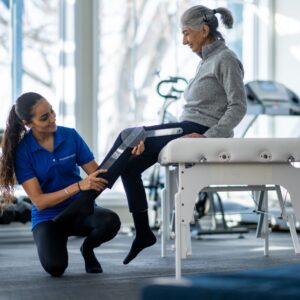
Physiotherapy, also known as physical therapy, has long been a critical component of healthcare, focusing on the rehabilitation and treatment of individuals with physical impairments, disabilities, and injuries. Traditional physiotherapy techniques include manual therapy, exercise therapy, electrotherapy, and hydrotherapy. While these methods remain essential, recent technological and methodological advancements have significantly expanded the scope and efficacy of physiotherapy.
Advanced Equipment in Physiotherapy
1. Robotic-Assisted Therapy
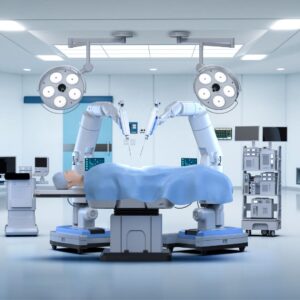
Robotic-assisted therapy is a groundbreaking innovation in physiotherapy, particularly beneficial for patients with neurological disorders such as stroke, spinal cord injuries, and cerebral palsy. These robots assist in repetitive motion exercises, which are crucial for neuroplasticity and recovery.
- Robotic Exoskeletons: These wearable robots support and enhance the movement of the limbs, allowing patients to practice walking and other motor activities with assistance.
- Robotic Arm Therapy Devices: These devices help patients perform repetitive arm movements, aiding in the recovery of upper limb function.
2. Virtual Reality (VR) and Augmented Reality (AR)
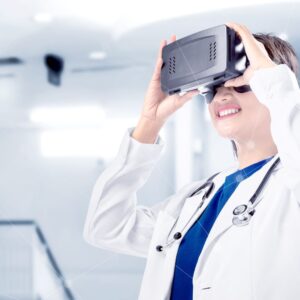
VR and AR technologies are being increasingly integrated into physiotherapy to create immersive and interactive rehabilitation environments.
- VR Rehabilitation: Patients use VR headsets to engage in simulated environments where they can perform specific exercises and activities. This technology is particularly effective in making rehabilitation more engaging and motivating.
- AR Rehabilitation: AR overlays digital information onto the real world, allowing patients to receive real-time feedback on their movements and posture during exercises.
3. Wearable Technology

Wearable devices are transforming physiotherapy by providing real-time data on patient activity and progress.
- Fitness Trackers and Smartwatches: These devices monitor physical activity, heart rate, and other vital signs, allowing physiotherapists to track patient progress remotely.
- Biofeedback Devices: These wearables provide real-time feedback on muscle activity and movement patterns, helping patients and therapists make necessary adjustments during exercises.
4. Electromyography (EMG) Devices
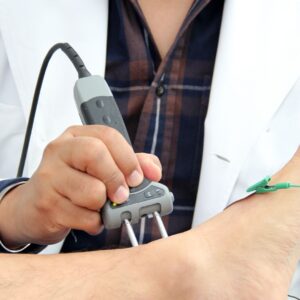
EMG devices measure muscle electrical activity, providing valuable insights into muscle function and coordination.
- Surface EMG (sEMG): Non-invasive sensors placed on the skin surface measure muscle activity during exercises, helping therapists tailor treatments to individual needs.
- Intramuscular EMG: Invasive sensors inserted into the muscle provide detailed information on muscle activity, useful for diagnosing specific muscle disorders.
5. Shockwave Therapy

Shockwave therapy involves the use of high-energy sound waves to promote healing in damaged tissues.
- Extracorporeal Shockwave Therapy (ESWT): This non-invasive treatment is effective for conditions like plantar fasciitis, tendinitis, and other musculoskeletal disorders. It stimulates blood flow and accelerates tissue repair.
Innovative Techniques in Physiotherapy
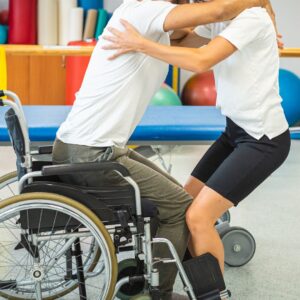
1. Manual Therapy Techniques

Manual therapy remains a cornerstone of physiotherapy, but new techniques and approaches are enhancing its effectiveness.
- Myofascial Release: This technique focuses on releasing tension in the fascial system, improving mobility and reducing pain.
- Instrument-Assisted Soft Tissue Mobilization (IASTM): Using specialized tools, therapists can apply precise pressure to soft tissues, breaking down scar tissue and promoting healing.
2. Dry Needling

Dry needling involves inserting thin needles into trigger points or tight muscle bands to relieve pain and improve function. This technique is gaining popularity for its effectiveness in treating musculoskeletal pain and dysfunction.
3. Functional Movement Screening (FMS)

FMS is a comprehensive assessment tool that evaluates movement patterns to identify dysfunctions and imbalances. It helps therapists design personalized treatment plans to address specific issues and prevent injuries.
4. Cupping Therapy

Cupping therapy, an ancient technique, has found a place in modern physiotherapy. It involves placing suction cups on the skin to improve blood flow, reduce pain, and promote healing.
5. Aquatic Therapy
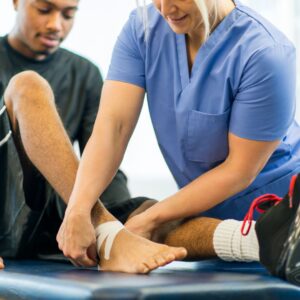
Aquatic therapy takes advantage of water’s buoyancy and resistance to provide a low-impact environment for rehabilitation. It is particularly beneficial for patients with joint pain, arthritis, and mobility issues.
Digital Health Tools in Physiotherapy
1. Telehealth and Tele-rehabilitation

Telehealth has revolutionized physiotherapy by making it more accessible, especially during the COVID-19 pandemic.
- Virtual Consultations: Patients can consult with physiotherapists remotely, receiving guidance and support from the comfort of their homes.
- Remote Monitoring: Wearable devices and mobile apps allow therapists to monitor patient progress and adjust treatment plans remotely.
2. Mobile Health Applications

Mobile health apps are empowering patients to take an active role in their rehabilitation.
- Exercise Apps: These apps provide guided exercise routines, instructional videos, and progress tracking features, making it easier for patients to follow their rehabilitation programs.
- Pain Management Apps: Apps designed to help patients manage chronic pain through guided exercises, relaxation techniques, and tracking pain levels.
3. Artificial Intelligence (AI) and Machine Learning

AI and machine learning are transforming physiotherapy by providing data-driven insights and personalized treatment plans.
- AI-Powered Diagnostics: AI algorithms analyze patient data to identify patterns and provide accurate diagnoses.
- Predictive Analytics: Machine learning models predict patient outcomes and recommend optimal treatment strategies.
4. 3D Printing
3D printing technology is being used to create customized orthotic devices, prosthetics, and rehabilitation aids.
- Customized Orthotics: 3D-printed orthotic devices provide a perfect fit, enhancing comfort and effectiveness.
- Prosthetics: 3D-printed prosthetics are more affordable and can be tailored to individual needs.
5. Biofeedback and Neurofeedback
Biofeedback and neurofeedback devices provide real-time feedback on physiological functions, helping patients improve control over their bodies.
- Biofeedback: Devices measure heart rate, muscle activity, and other physiological parameters, providing feedback to help patients adjust their activities.
- Neurofeedback: Devices monitor brain activity, helping patients with neurological conditions improve cognitive and motor functions.
Case Studies: Innovations in Physiotherapy in Action
1. Robotic-Assisted Rehabilitation for Stroke Patients
Robotic-assisted rehabilitation has shown remarkable results in helping stroke patients regain mobility. For instance, a study conducted at a leading hospital in India found that patients using robotic exoskeletons for gait training showed significant improvements in walking speed and balance compared to traditional therapy.
2. Virtual Reality for Chronic Pain Management
A physiotherapy clinic in Dehradun has successfully integrated VR into its treatment programs for chronic pain patients. Patients engaging in VR-based exercises reported reduced pain levels and increased motivation to participate in rehabilitation sessions.
3. Wearable Technology for Post-Surgical Rehabilitation
A physiotherapy center in Mumbai uses wearable devices to monitor the progress of patients recovering from orthopedic surgeries. The data collected from these devices helps therapists adjust exercise programs in real-time, leading to faster recovery and improved outcomes.
4. Tele-rehabilitation for Rural Communities
Tele-rehabilitation programs have been implemented in rural areas of India, where access to physiotherapy services is limited. These programs use mobile health apps and video consultations to provide remote support, ensuring patients receive the care they need regardless of their location.
Future Directions in Physiotherapy
The future of physiotherapy looks promising, with ongoing research and development paving the way for further innovations.
1. Stem Cell Therapy
Stem cell therapy holds potential for regenerating damaged tissues and improving outcomes in conditions like osteoarthritis and spinal cord injuries.
2. Gene Therapy
Gene therapy aims to treat genetic disorders and enhance the body’s ability to repair and regenerate tissues, offering new possibilities for physiotherapy.
3. Nanotechnology
Nanotechnology involves the use of nanoparticles to deliver targeted therapies at the cellular level, potentially revolutionizing the treatment of musculoskeletal disorders.
4. Advanced AI and Robotics
Continued advancements in AI and robotics will further enhance the precision and effectiveness of physiotherapy treatments, leading to better patient outcomes.
5. Personalized Medicine
The integration of genetic and biomarker data into physiotherapy will allow for more personalized and effective treatment plans tailored to individual patients.
Conclusion
Innovations in physiotherapy are transforming the field, making treatments more effective, personalized, and accessible. From advanced equipment like robotic-assisted therapy and VR to digital health tools like tele-rehabilitation and AI, these advancements are revolutionizing patient care.
For students interested in pursuing a career in physiotherapy, staying abreast of these innovations is crucial. Dehradun offers some of the best BPT (Bachelor of Physiotherapy) colleges, providing top-notch education and training in this evolving field. Platforms like College Forum are invaluable resources for finding the best BPT colleges in Dehradun. College Forum is the best platform that provides comprehensive information on the best colleges in Dehradun, helping students make informed decisions about their education and career paths.
By leveraging the resources and guidance available on College Forum, students can explore various physiotherapy programs, compare colleges, and select the one that best fits their career goals. This ensures a solid foundation for a successful future in physiotherapy, equipped with the knowledge and skills to embrace and implement the latest innovations in the field.

